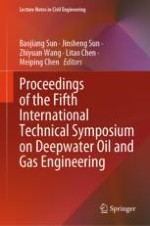2024 | OriginalPaper | Chapter
Study on Dissociation Characteristics of Type II Hydrogen Hydrate with ECP, CP, THF and 1, 3-DIOX Promoter
Authors : Zhimin Wu, Yanhong Wang, Shuanshi Fan, Xuemei Lang, Gang Li
Published in: Proceedings of the Fifth International Technical Symposium on Deepwater Oil and Gas Engineering
Publisher: Springer Nature Singapore
Activate our intelligent search to find suitable subject content or patents.
Select sections of text to find matching patents with Artificial Intelligence. powered by
Select sections of text to find additional relevant content using AI-assisted search. powered by
